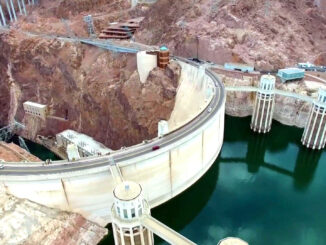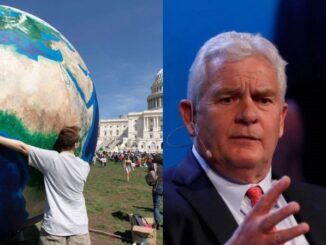
In the golden glow of California’s self-proclaimed climate leadership, Governor Gavin Newsom has positioned himself as a champion of green energy, touting aggressive policies to phase out fossil fuels and embrace renewables. From banning new gas-powered cars by 2035 to pushing for a carbon-neutral grid, Newsom’s rhetoric paints a picture of a state leading the charge against climate change. Yet, beneath this veneer lies a stark contradiction: California’s voracious appetite for oil extracted from the heart of the Amazon rainforest, where indigenous communities are fighting tooth and nail against environmental devastation. This hypocrisy not only undermines Newsom’s environmental credentials but also exposes the state’s reliance on foreign fossil fuels that fuel deforestation, human rights abuses, and ecological harm thousands of miles away.A recent declaration from indigenous nations in Ecuador and Peru underscores this disconnect.
On August 19, 2025, leaders from groups like the Binational Achuar Coordination, the Sápara Nation, and the Shiwiar Nation rejected a cross-border oil deal between state-owned companies Petroperú and Petroecuador. The agreement aims to link Ecuador’s southern Amazon oil blocks to Peru’s Norperuvian Pipeline—a conduit with a notorious history of spills that have poisoned rivers and ravaged ecosystems. Indigenous leaders decried the deal as a blatant violation of their right to Free, Prior, and Informed Consent (FPIC) under international law, vowing legal and social resistance to prevent further deforestation and climate emissions in one of the world’s most biodiverse regions.Their message was pointedly directed at California and Newsom himself: End the imports of Amazon crude. California’s refineries are the largest U.S. consumers of this oil, processing hundreds of millions of barrels annually, primarily from Ecuador.
This demand echoes ongoing campaigns, including a California Senate resolution (SR 51) introduced after a delegation of indigenous leaders visited the state, urging an official review of these imports and an end to complicity in Amazon destruction.
As Kevin Koenig of Amazon Watch put it, expanding drilling flies in the face of global efforts to ditch fossil fuels—yet California’s demand keeps the taps open.
California’s Foreign Oil Addiction: The Numbers Don’t LieTo grasp the scale of this hypocrisy, consider California’s oil imports. In 2024, foreign suppliers provided nearly two-thirds of the crude oil refined in the state, led by countries like Iraq, Brazil, Guyana, and Ecuador.
Based on data from the California Energy Commission and other sources, California imported approximately 285 million barrels of crude oil from foreign sources that year (calculated from an average of about 780,000 barrels per day multiplied by 365 days).
Ecuador alone accounted for roughly 16.9% of these foreign imports, equating to about 48 million barrels—much of it sourced from the Amazon basin.
This represents a staggering 75% dependency on imported oil overall, with foreign sources dominating as in-state production dwindles.
These imports aren’t just numbers; they’re tied to real-world harm. The Norperuvian Pipeline’s spills have decimated indigenous lands, and California’s role as a top buyer perpetuates this cycle.
Newsom’s administration has celebrated California’s renewable progress, but the state’s energy hypocrisy runs deeper when you examine the full energy mix.
California’s Energy Mix: Green on the Surface, Fossil-Fueled Below
California’s electricity generation tells a partial success story. In 2024, renewables—including hydroelectric power and small-scale solar—supplied 57% of in-state electricity, with natural gas at 34%, solar at 19%, and hydropower at 12%.
Overall, about 54% of the state’s electricity came from renewable or zero-greenhouse-gas sources, far outpacing the national average of 40%.
But this masks the bigger picture: Petroleum still accounts for over half of California’s total energy consumption, powering transportation and industry.
Natural gas, meanwhile, plays a massive role, fueling nearly 45% of electricity generation and 31% of industrial needs.
California produces only a fraction of its gas domestically, importing a whopping 93% via pipelines from the Southwest (Arizona, New Mexico, Texas), the Rocky Mountains, and Canada.
This interstate and international dependency highlights how California’s “green” grid relies on fossil fuels extracted elsewhere. Electricity imports add another layer. The state imports between one-fifth and one-third of its power—about 25-32% in recent years—from neighboring regions.
Sources include hydropower from the Northwest (Oregon and Washington) and a mix of coal, gas, and renewables from the Southwest (Nevada, Arizona, Utah).
While some of this is clean, much comes from fossil fuel-heavy grids, allowing California to outsource its emissions while claiming progress at home.
|
Energy Source
|
Share in Electricity Mix (2024)
|
Primary Import Sources
|
|---|---|---|
|
Renewables (incl. Solar, Hydro, Wind)
|
57%
|
In-state, with some hydro from Northwest
|
|
Natural Gas
|
34-43%
|
Pipelines from Southwest U.S., Rockies, Canada
|
|
Imports (Overall)
|
25-32%
|
Northwest (hydro), Southwest (gas/coal/renewables)
|
|
Petroleum (Total Energy)
|
>50%
|
Foreign: Iraq (22%), Ecuador (17%), Saudi Arabia (16%)
|
The Refinery Shutdown Bombshell: Skyrocketing Prices Ahead
Compounding the hypocrisy are upcoming refinery closures that threaten to jack up fuel prices. By 2026, California will lose 17% of its refining capacity with the shutdown of two major facilities: Phillips 66’s Los Angeles-area refinery (closing late 2025) and Valero’s Benicia refinery. We covered this in the podcast with Doomberg, Mike Umbro, and David Blackmon.
These closures, driven by regulatory pressures and market uncertainty, will eliminate nearly 300,000 barrels per day of production.
The impact? Analysts predict gasoline and diesel prices could surge by $1.21 per gallon by August 2026, potentially reaching $8 per gallon in a worst-case scenario.
This represents a 75% increase from current levels, exacerbating California’s already high fuel costs and straining consumers.
With no interstate oil pipelines and dwindling in-state production, the state will rely even more on foreign imports—potentially from sensitive areas like the Amazon—to fill the gap.
Newsom’s administration has offered no clear plan to mitigate this, leaving residents to foot the bill for his green ambitions.
The Rain Forest’s Cry: Time for Real Accountability
Gavin Newsom’s energy policies strike deep into the rain forest, funding destruction abroad while Californians face higher prices and energy insecurity at home. Indigenous voices from Ecuador and Peru aren’t just protesting a distant deal—they’re calling out California’s complicity.
There was a time when the true crusaders for the environment would be upset. Like Dr. Patrick Moore, one of the original founders of Greenpeace, would be in support of not importing oil from Equador and destroying the rainforest. Are the green energy hypocrites afraid to look at the data?
True climate leadership means ending this hypocrisy: Phasing out Amazon oil imports, bolstering domestic clean energy without outsourcing emissions, and planning for refinery transitions that don’t punish consumers. Until then, Newsom’s green facade is just that—a thin cover for a fossil-fueled reality.
We need to invest in local domestic production, with domestic jobs, and we can control the impact on the environment. A shout-out to Mike Umbro on X for posting the original article on the Amazonwatch.org site.
Is Oil & Gas Right for Your Portfolio?
Crude Oil, LNG, Jet Fuel price quote
ENB Top News
ENB
Energy Dashboard
ENB Podcast
ENB Substack






